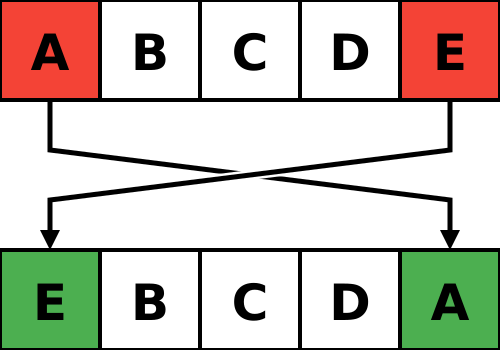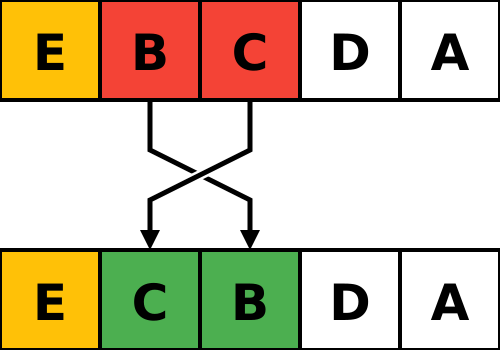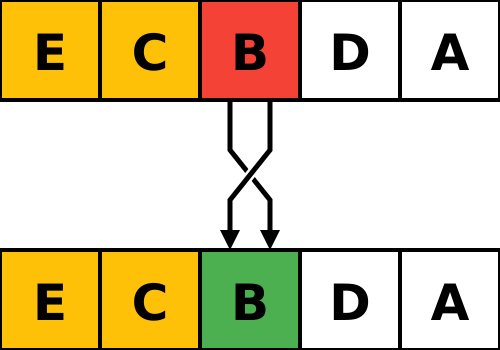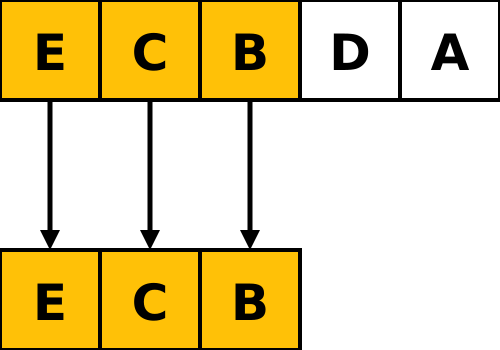Lottery
An auditable, Blockchain-based, Lottery.
- General Concepts
- A Lottery's Configuration
- Non-persisted Interface
- Persisted Interface
- Algorithmic Details
- Tips & Tricks
General Concepts
The purpose of this contract is to implement a Lottery that will raffle out a certain amount of prizes amongst a certain number of players. It will do this in an auditable manner, and it provides the option of persisting the results in the Blockchain, so as to serve as a proof of prize allocation.
A Lottery in this sense, consists of a list of players (eg. a list of names, or addresses, or aliases, etc.), a number of winners to be allotted prizes, and a seed to use in order to prime the Random Bits Generator.
Such a Lottery can be created (provided a name is assigned to it), and the winners (implicitly) persisted forever on the Blockchain.
Additionally, a Lottery can be run "blindly" without persisting to the Blockchain, and serve as a quick way to allot prizes when auditing is not an issue.
In what follows, we'll delve deeper into the particulars of the Lottery's implementation, but before that, we'll present a Quick Start guide for the impatient.
Quick Start
Let's say we want to raffle out 5 Golden Tickets to a tour of Willy Wonka's Chocolate Factory. The list of children interested in these is1: Alice, Bob, Carol, Chad, Charlie, Craig, Dan, David, Erin, Eve, Faythe, Frank, Grace, Heidi, Ivan, Judy, Mallory, Michael, Olivia, Oscar, Peggy, Rupert, Sybil, Trent, Trudy, Vanna, Victor, Walter, Wendy, and Yves, 30 in total (note that this list is sorted, but it need not be so).
Finally, let's use "0x0000000000000000000000000000000000000000000000000000000000000000" as the random seed.
With the preliminaries out of the way, head on over to PolygonScan > Contract.
Getting the Lottery out of the Way
To get the Lottery out of the way, you can simply call the simulate(bytes32,uint256,string[]) method, providing the following parameters:
seed (bytes32)
: "0x0000000000000000000000000000000000000000000000000000000000000000"
numberOfWinners (uint256)
: 5
players (string[])
: ["Alice", "Bob", "Carol", "Chad", "Charlie", "Craig", "Dan", "David", "Erin", "Eve", "Faythe", "Frank", "Grace", "Heidi", "Ivan", "Judy", "Mallory", "Michael", "Olivia", "Oscar", "Peggy", "Rupert", "Sybil", "Trent", "Trudy", "Vanna", "Victor", "Walter", "Wendy", "Yves"]
This will return:
string[]
: Sybil,Alice,Erin,Charlie,Grace
signifying that Alice, Charlie, Erin, Grace, and Sybil are the winners.
Creating a New Lottery
Alternatively, we can create a new Lottery and have it be persisted on the Blockchain forever by calling the create(string,bytes32,uint256,string[]) method with:
name (string)
: "Willy Wonka's Chocolate Factory Tour"
seed (bytes32)
: "0x0000000000000000000000000000000000000000000000000000000000000000"
numberOfWinners (uint256)
: 5
players (string[])
: ["Alice", "Bob", "Carol", "Chad", "Charlie", "Craig", "Dan", "David", "Erin", "Eve", "Faythe", "Frank", "Grace", "Heidi", "Ivan", "Judy", "Mallory", "Michael", "Olivia", "Oscar", "Peggy", "Rupert", "Sybil", "Trent", "Trudy", "Vanna", "Victor", "Walter", "Wendy", "Yves"]
If everything is OK, you'll get:
bool
: true
Signifying that the Lottery was created successfully.
Querying Lottery Winners
Finally, we can check who won the the "Willy Wonka's Chocolate Factory Tour" Lottery by calling winners(string) with parameters:
name (string)
: "Willy Wonka's Chocolate Factory Tour"
Yielding:
string[]
: Sybil,Alice,Erin,Charlie,Grace
Note how this coincides with our initial simulation above.
A Lottery's Configuration
A Lottery configuration (viz. Config) consists of 3 parts:
- a seed: this is a block of bytes used to prime the random number generator,
- a number of winners: this is the number of prizes that will be raffled out, and
- a players list: a list of strings, one for each player (but see below for alternatives).
A configuration can be generated from its parts by calling the build(bytes32,uint256,string[]) method, but this is indeed quite unnecessary, since one can simply build one such configuration like so:
[
"0x0000000000000000000000000000000000000000000000000000000000000000",
5,
[
"Alice", "Bob", "Carol", "Chad", "Charlie",
"Craig", "Dan", "David", "Erin", "Eve",
"Faythe", "Frank", "Grace", "Heidi", "Ivan",
"Judy", "Mallory", "Michael", "Olivia", "Oscar",
"Peggy", "Rupert", "Sybil", "Trent", "Trudy",
"Vanna", "Victor", "Walter", "Wendy", "Yves"
]
]
Even more so, all the interfaces accepting a Config parameter accept the part-wise parameters as well.
Non-Persisted Interface
This is the easiest interface to use, and it consists solely of pure methods, thus incurring no transaction cost at all.
The methods exposed are:
simulate(tuple)
: Takes a Config and returns the Lottery winners.
simulate(bytes32,uint256,string[])
: Takes a part-wise description of a Lottery's configuration and returns the Lottery winners.
The downside to using these methods is that nothing gets persisted to the Blockchain, making auditing impossible.
Persisted Interface
This interface is a bit more involved than the non-persisted one, but allows for the Lottery configuration to be persisted on the Blockchain, making it easily auditable. All Lotteries, once persisted to the Blockchain, are identified by a name, and this is the only handle needed to retrieve or interact with them.
The read-only methods exposed are:
exists(string)
: Determine whether the given Lottery name already exists.
get(string)
: Retrieve the Config associated to the given Lottery name.
winners(string)
: Retrieve the list of winners associated to the given Lottery name.
The write methods exposed are:
create(string,tuple)
: Create a Lottery with the given name, using the given Config, returns true on success.
create(string,bytes32,uint256,string[])
: Create a Lottery with the given name, using the given parts-wise description of a Lottery's configuration, returns true on success.
Note that, upon creation, the winners of a Lottery are implicitly determined, as they depend solely on the list of players and seed provided.
Algorithmic Details
If you made it here, you're definitely motivated to learn how this tiny contract works! Kudos to you. Pat yourself on the back.
In what follows we'll explore the three more algorithmic aspects behind the Lottery contract itself.
The Random Bits Generator
In order to generate the list of winners, we'll need a source of "randomness". Barring a (mostly philosophical) discussion around what we mean by "randomness", what this means in practice is an infinite and reproducible source of bits:
- we need this bit source to be infinite because we don't a priori know how many we'll actually use, and there's no limit (imposed by this contract at least) to the number of players, and
- we need the bit source to be reproducible because we want to generate the same bit-stream when priming the generator with the same seed.
The bits generator we use works as follows:
- set the
stateto the givenseed, - set the
currentbit index to0, - set the
roundcounter to0, - repeat forever:
In the previous discussion, the emit instruction is intended to signify the actual generation of random bits.
In practice, this is accomplished by having the state, current, and round variables all packed together in a single structure (viz. the _Rng implementation-only structure), and having a specific implementation method (viz. _getBit) manipulate it and return the intended bit.
A note about security
The procedure thus presented is not particularly "secure" in a cryptographic sense, the good news is that we don't need it to be: take into account that all of this happens "above table" so to speak, in a "white box" setting.
The last "quirk" left to be explained is the concatenation with the round counter.
This is done in order to prevent the (admittedly, apparently improbable case of the) iterated hashing from cycling into a fixed point, ie. a value of state such that keccak256(state) equals state itself.
By making the argument to keccak256 non-repeating, we prevent this situation from ever arising.
The "Fast Dice Roller"
Now that we have a big enough (actually, infinite) source of bits, we need a way of turning them into actual concrete numbers in a specific range. Doing so in a uniform manner (ie. where all the numbers in the range having the same probability of being chosen) is not as straightforwards as one may think.4
Luckily, a fast, scalable, and simple solution to this exists: the "Fast Dice Roller" algorithm of Jérémie Lumbroso.
Although the detailed discussion of this algorithm is beyond the scope of this README, the interested reader can consult the original paper here: Optimal Discrete Uniform Generation from Coin Flips, and Applications --- Jérémie Lumbroso (2013).
The Fisher-Yates Selector
Finally, with a robust way of generating bits, and turning them into numbers in a desired range, we can now turn our attention to actually selecting winners from the list of players.
Assume we have a list players of players (of length l), and we want to select n out of them as winners (with n at most equalling l).
The way we're going to go about it is conceptually simple:
- for
ibetween0andnexclusive, repeat:- generate a random number between
0andl - i, call itj, - exchange the players in the
i-th andi + j-th positions.
- generate a random number between
- keep only the first
nplayers in the list, call these the winners.
By way of example, let's say we have 5 players: Alice, Bob, Chary, David, and Eve, and we'd like to select 3 of them as winners. Here's what's happening:
- at the very first iteration,
iequals 0,jwill take a uniformly random number in the[0, 5)interval, say 4, theni + jwill equal0 + 4 = 4, thus, we swap the 0-th and 4-th positions in theplayerslist:
- at the very first iteration,
iequals 1,jwill take a uniformly random number in the[0, 4)interval, say 1, theni + jwill equal1 + 1 = 2, thus, we swap the 1-th and 2-th positions in theplayerslist:
- at the very third and last iteration,
iequals 2,jwill take a uniformly random number in the[0, 3)interval, say 0, theni + jwill equal2 + 0 = 2, thus, we swap the 2-th and 2-th positions in theplayerslist (ie. we do nothing):
- finally, only the first 3 positions matter, so we simply drop the rest:
This is noting more than the Fisher--Yates Shuffle being executed until the n-th step and bailing out afterwards.
That this procedure generates winners with a uniform distribution follows from the fact that the Fisher--Yates Shuffle generates permutations uniformly, and that it proceeds incrementally whilst doing so, thus, terminating the algorithm's run early, leaves us with a uniform selection at every step.
Tips & Tricks
In what follows, we'll show some tips and tricks in order to use the Lottery contract in ways other than the originally intended one.
Progressive Results
Using the simulate() methods, one can generate winners "incrementally", ie. the first 3 winners are generated, the the next 3, and so on and so forth.
This is very easy to accomplish and just entails calling simulate() with progressively higher values of the numberOfWinners configuration part.
The reason why this works, is that the winners list is generated "from left to right", and thus when generating, say, either 3 or 6 winners, the first 3 will always coincide (provided the seed stays the same).
Non-Uniform Probabilities
Sometimes the Lottery probabilities should not be allotted uniformly, but rather according to some other proportionality criterion.
In order to achieve this with the Lottery contract, you can simply insert duplicate entries in the players configuration part, according to the odds allotted to each participant.
For instance, let's say we have three players, A, B, and C, furthermore, let's say that A is given 1 odd, B is given 2, and C is given three, then presenting a players list like the following:
["A", "B", "B", "C", "C", "C"]
will realize the required probabilities.
A complication that arises in this case, is that repeated winners can appear.
When this happens, one can simply ignore duplicates, as the winners themselves will be allotted proportionally to the players list.
The downside of this is that you may thus get less winners after duplicates removal, but this can be very easily overcome by applying the same strategy as mentioned above: simply continue to generate more and more winners until the given number of unique winners is met.
Do note though, that in order to commit this to the Blockchain, a strategy like the one below must be employed to ensure transparency.
Generate & then Commit
Although most of the times all the parameters in a Lottery's Config will be known beforehand, sometimes this is not the case (see the problem above).
A way around this is: simulate until the conditions needed are satisfied, then commit the resulting Config by calling create().
This method has all the advantages and none of the downsides, since you're free to experiment with the Config to your heart's content, and eventually commit it to the Blockchain and have every interested player audit it.
Needless to say, on the spirit of fairness and transparency, the seed parameter should be chosen in such a way so as to disperse any doubts as to the creator's advantage (eg. agreeing upon the seed beforehand, by a trusted third party, by partial mutual generation, etc.).
The players list order should also be taken into account and fairly and unambiguously determined (the seed and the players list order being the only two parameters having any impact on the Lottery's result).
-
Taken ad lib from Wikipedia > Alice and Bob.
↩ -
The
||symbol means "byte-wise concatenation", ie. the result of tacking the involved bytes one after the other, in the order given.↩ -
This modulus (ie.
%) operation can be implicitly performed "for free" by storing thecurrentbit index in an 8-bit variable and allowing it to wrap around on overflow (ie. usinguncheckedin Solidity).↩ -
See Wikipedia > Fisher--Yates shuffle > Modulo bias for a cursory explanation of the problem, in the specific case of Fisher--Yates shuffling (coincidentally, this is the algorithm we'll visit further down).
↩



